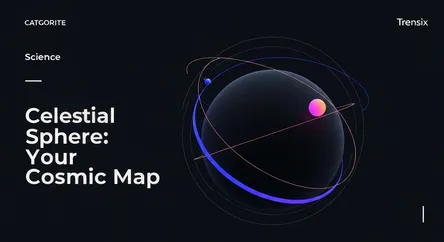Science
Celestial Sphere: Your Cosmic Map

Discover the celestial sphere, an imaginary globe used by astronomers to map stars, planets, and constellations in the night sky. Your guide is here.
What is it?
The celestial sphere is an ancient and practical concept in astronomy. It's an imaginary globe of an infinitely large radius with Earth at its center. From our perspective, all celestial objects—stars, planets, and galaxies—appear to be projected onto the inner surface of this sphere. This model allows astronomers to create a two-dimensional map of the sky using a coordinate system similar to Earth's latitude and longitude. These celestial coordinates, known as declination and right ascension, provide a fixed location for every object, making it possible to track and identify them consistently.
Why is it trending?
With the rise of accessible consumer telescopes, sophisticated stargazing apps, and a renewed public fascination with space exploration, understanding the basics of sky mapping is more popular than ever. The celestial sphere is the foundational concept behind the star charts and digital planetariums that guide amateur astronomers. As astrophotography gains followers, knowing how to navigate the celestial sphere becomes essential for capturing stunning images of deep-sky objects. It's the theoretical framework that makes practical modern stargazing possible for everyone.
How does it affect people?
The celestial sphere directly impacts anyone who looks up at the night sky with curiosity. It provides the framework for identifying constellations, predicting the path of the Moon and planets, and understanding why different stars are visible during different seasons. For hobbyists, it’s the key to aiming a telescope correctly. This model demystifies the apparent rotation of the heavens, explaining it as a reflection of Earth's own rotation. It transforms a scattered collection of stars into an organized, navigable map, making the universe feel a little more accessible.